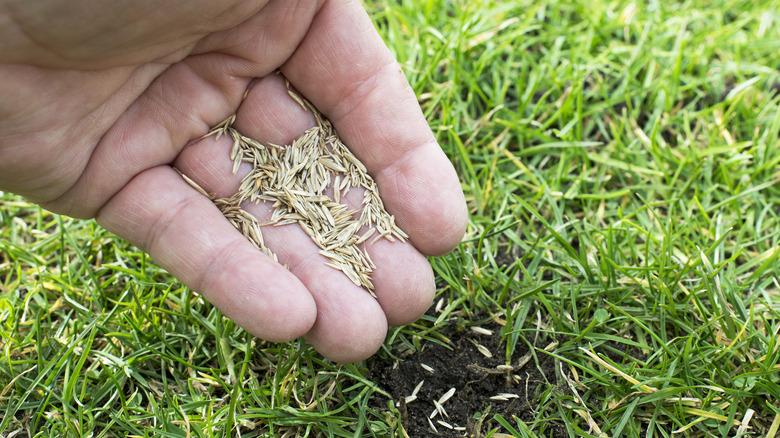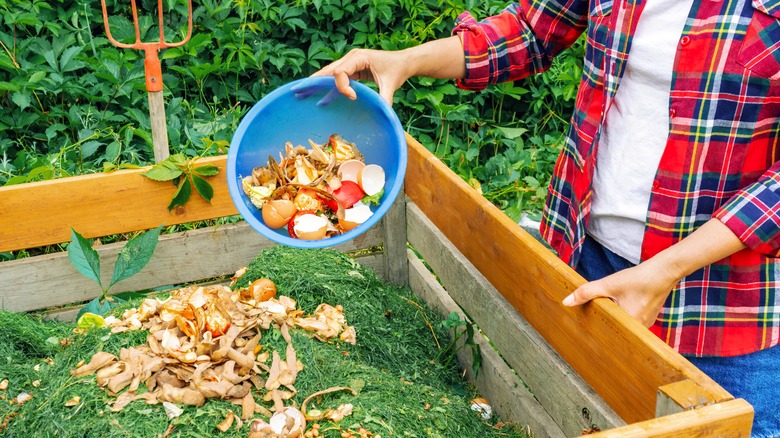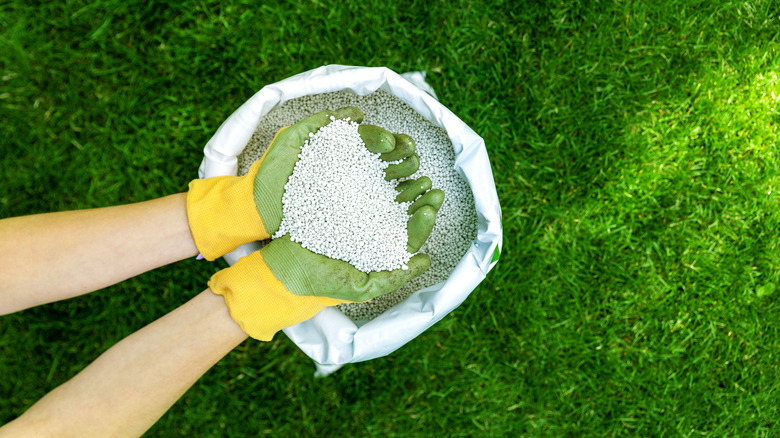The Crucial Step That Encourages Early Growth From Grass Seed
When nurturing a lush, vibrant lawn from scratch, the step following the initial irrigation of your grass seeds holds immense importance. After you've watered your seeds (guiding them to sprout and take root), the application of fertilizer to emerging grass seedlings can significantly bolster their growth and development. This process begins when the seedlings reach a height of about three inches, a stage at which they're robust enough to benefit from additional nutrients without suffering from potential damage. After this, weekly fertilization becomes key until the seedlings are ready for transplanting. The importance of this stage lies in understanding the specific nutrients these young plants need to flourish.
Grass seedlings thrive on a balanced diet of essential nutrients, each of which plays a pivotal role in their growth. Nitrogen (N), phosphorus (P), and potassium (K) are the primary nutrients seedlings crave. Nitrogen is crucial for promoting vigorous leaf growth, giving the seedlings the green color that is often associated with health and vitality. Phosphorus supports the development of strong root systems, which are essential for water and nutrient uptake. Potassium, on the other hand, contributes to overall plant health, aiding in disease resistance and drought tolerance.
The presence of these nutrients in the right balance is vital for the seedlings to develop into resilient, mature grass capable of withstanding environmental stresses. That being said, knowing the types of nutrients your seedlings need is one thing; applying them correctly is another.
How to properly fertilize seedlings
As you navigate the early stages of caring for your grass seedlings, you're faced with a pivotal choice: grabbing a ready-made fertilizer off the shelf or embracing the organic path by creating your own mix. If you prefer to go organic, composting is a popular and effective method. This is the controlled decomposition of organic matter, such as manure and kitchen waste, by microorganisms in the presence of oxygen. This process balances the nutrient content of the materials, making them more accessible to plants.
The benefits of composting extend beyond merely providing nutrients. Compost also improves soil structure, enhances moisture retention, and fosters beneficial microbial activity. The raw materials commonly used in composting include kitchen waste such as vegetable scraps, lawn clippings, leaves, and animal manure. By layering these materials and allowing them to decompose, you create a rich, balanced fertilizer that can significantly enhance the growth of your grass seedlings.
If mixing and turning compost isn't quite your style, there's always store-bought fertilizer. If you go this route, look for an all-purpose blend with a balanced mix of nitrogen, phosphorus, and potassium. These fertilizers are crafted to support the growth and development of young plants like seedlings. However, the key here is to follow the instructions on the label. Applying the right amount of fertilizer
ensures your seedlings get just what they need without tipping into over-fertilization, which can be just as detrimental as neglect.
Tips for fertilizing seedlings
Tending to your grass seedlings with fertilizer is an art that demands attention and a gentle hand. Think of it as seasoning food — too much salt spoils the dish. If your seedlings look a bit under the weather, it's best to hold off on fertilizer. The adage "less is more" holds true in this situation. Using too much fertilizer can harm your seedlings, leading to nutrient burn, which can manifest as yellowing or browning of the leaves. It's a serious setback that can stunt your seedlings' growth, the opposite of what you want for your seedings.
Beyond the need for fertilizer, seedlings also crave the basics: ample water and light. These are the true cornerstones of their growth. Water, more than just a thirst quencher, is essential for transporting nutrients within the seedlings, helping them absorb the food they need from the soil. Light, on the other hand, is the powerhouse behind photosynthesis, enabling your grass to convert sunlight into the energy it needs to grow. Balancing water and light ensures your seedlings not only survive but thrive, laying down strong roots and sprouting vibrant, green leaves. So, as you nurture your grass seedlings, approach fertilizing with a mindset of precision and moderation.


